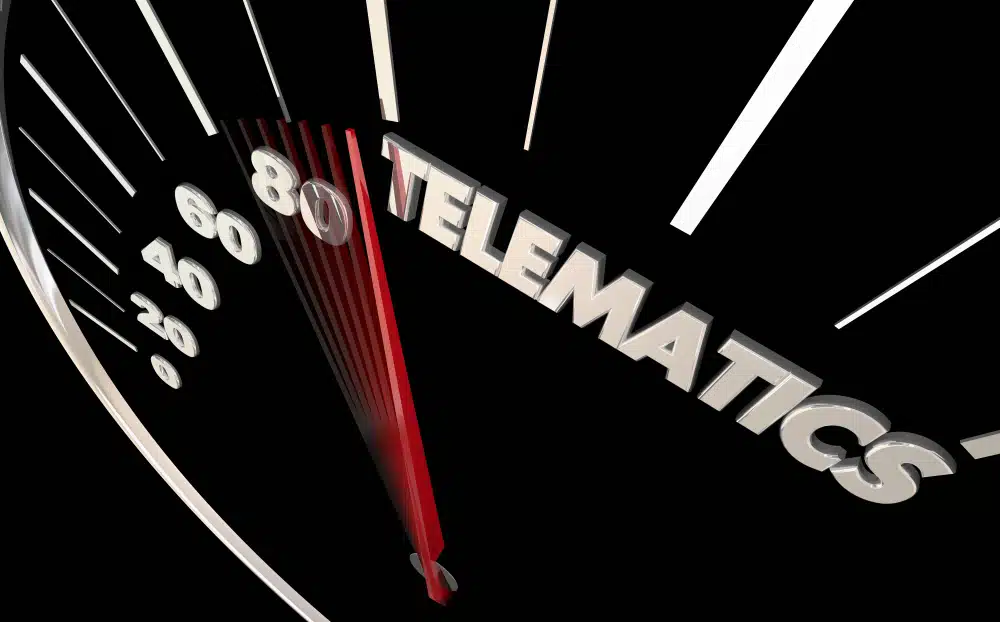
Navigating the Future: How IoT Telematics Transforms Fleet Management
In the ever-evolving landscape of fleet management, IoT telematics is emerging as a transformative force. By seamlessly integrating real-time data and advanced analytics, IoT telematics empowers fleet managers to optimize operations, enhance driver safety, and improve overall efficiency. This technology heralds a new era in fleet management, where data-driven insights drive smarter decisions and pave the way for a more sustainable and cost-effective future.
Introduction
The Internet of Things (IoT) refers to the interconnected network of physical devices, vehicles, buildings, and other objects embedded with sensors, software, and connectivity capabilities. These devices can collect and exchange data with each other and central systems, allowing for real-time monitoring, analysis, and control. IoT has had a profound transformational impact on various industries by enabling smarter and more efficient operations, data-driven decision-making, and improved customer experiences. IoT has had a transformational impact on various industries like manufacturing, healthcare, agriculture, retail, smart cities, etc.
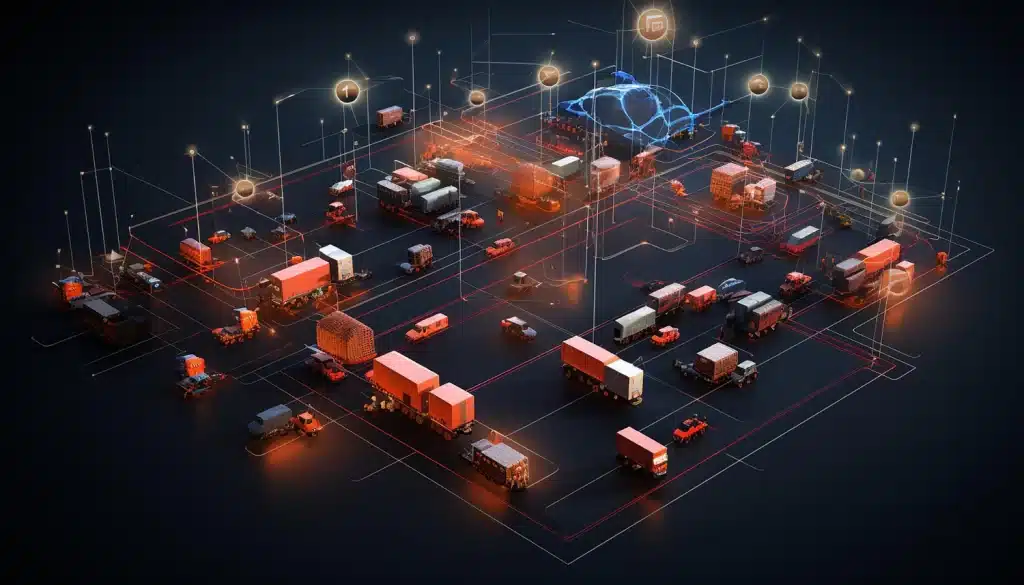
IoT in Fleet Management
IoT has brought significant transformation to the field of fleet management. Fleet management involves the supervision and coordination of a fleet of vehicles, such as trucks, vans, and cars, used for various purposes, including transportation and logistics. Here's how IoT has impacted fleet management:
Real-time Tracking
IoT-enabled GPS tracking devices and sensors in vehicles allow fleet managers to monitor the real-time location, speed, and status of vehicles. This improves route optimization, reduces fuel consumption, and enhances driver safety.
Predictive Maintenance
IoT sensors can monitor vehicle health by tracking engine performance and other critical parameters. Fleet managers can schedule maintenance based on actual vehicle condition, reducing unplanned downtime and maintenance costs.
Driver Behavior Monitoring
IoT devices can collect data on driver behavior, such as speeding, harsh braking, and idling. This data helps fleet managers coach drivers for safer and more fuel-efficient driving, reducing accidents and operational costs.
Asset Security
IoT technology helps in preventing theft and unauthorized use of vehicles. Alarms, immobilizers, and geofencing features can be remotely controlled to protect valuable assets.
Data Analytics
IoT-generated data is processed and analyzed to gain insights into fleet performance. This data-driven approach allows for better decision-making, cost reduction, and operational efficiency.
According to Allied Market Research,the global IoT fleet management market was valued at $6.4 billion in 2021, and is projected to reach $16 billion by 2031, growing at a CAGR of 9.8% from 2022 to 2031. This growth is driven by the increasing adoption of IoT solutions in the transportation and logistics industry, where fleet management systems are becoming essential for optimizing operations, improving safety, and reducing costs. The continued advancement of IoT technology is expected to further enhance the capabilities and impact of fleet management in the coming years.
IoT-based Telematics in Fleet Management
IoT-based telematics is a technology that has revolutionized fleet management by providing real-time data and analytics to optimize vehicle and driver performance. Telematics devices are able to produce an enormous amount of information in real-time to provide to fleet, property, and financial management personnel.Telematics is a technology that integrates telecommunications and informatics to monitor and manage various aspects of vehicle fleets. It involves the use of hardware devices, such as GPS trackers and sensors, in vehicles to collect data related to vehicle location, performance, driver behavior, and more. This data is then transmitted to a centralized system, often in the cloud, where it is processed and analyzed to improve fleet operations.

Employment in Fleet Management
Here is how telematics is employed in fleet management:
- Vehicle Tracking: Telematics devices, often equipped with GPS, allow fleet managers to track the real-time location of their vehicles. This helps in optimizing routing, ensuring on-time deliveries, and monitoring vehicle usage.
- Driver Behavior Monitoring: Telematics systems can collect data on driver behavior, such as speed, harsh braking, and acceleration. This data can be used to identify and address unsafe driving habits.
- Maintenance Management: Telematics devices can monitor vehicle diagnostics and alert fleet managers when maintenance is needed, reducing downtime and improving vehicle longevity.
- Fuel Efficiency: Telematics data can be used to monitor fuel consumption and identify areas for fuel efficiency improvements.
- Compliance and Reporting: Telematics can assist in compliance with regulations by providing data on driving hours and other required records.
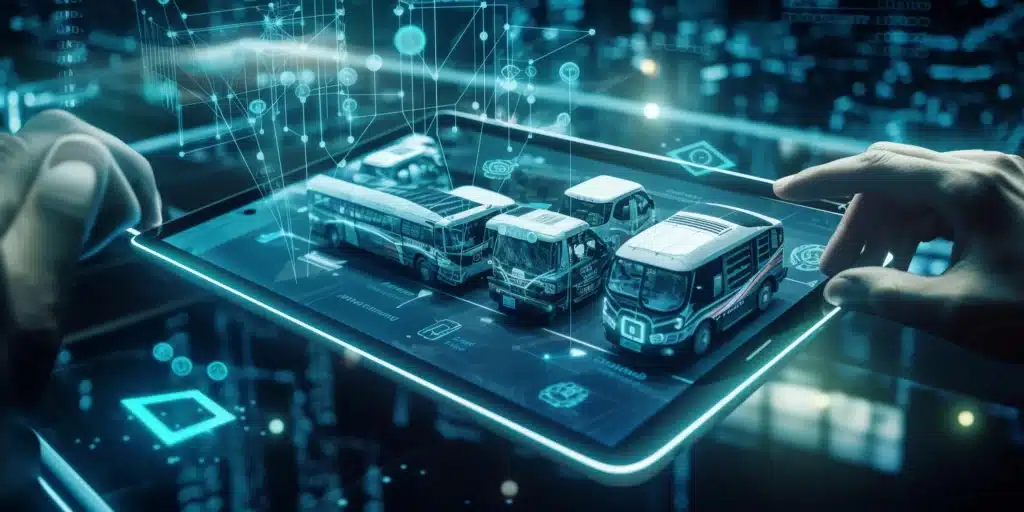
IoT-based Devices in Fleet Management
IoT-based devices, such as GPS fleet tracking devices, telematics devices, and sensors, play a crucial role in collecting and transmitting data to centralized or cloud-based systems. These devices are at the heart of the Internet of Things (IoT) ecosystem, enabling organizations to gather real-time information, make informed decisions, and optimize operations. Here's an overview of these devices and their roles:
GPS Fleet Tracking Devices
- GPS fleet tracking devices are used to monitor and manage vehicles within a fleet. They employ Global Positioning System (GPS) technology to determine the location of vehicles.
- These devices collect data on vehicle location, speed, direction, and sometimes additional information like fuel consumption and engine diagnostics.
- Data is typically transmitted via cellular networks to a centralized system where it can be processed and analyzed.
- Fleet managers can access this data through web-based or mobile applications to track vehicle routes, optimize routes for efficiency, improve driver behavior, and enhance overall fleet management.
Telematics Devices
- Telematics devices are more advanced than simple GPS tracking devices, as they provide a broader range of data related to vehicles and driver behavior.
- In addition to GPS data, telematics devices collect information such as vehicle speed, engine performance, fuel consumption, and driver behavior (e.g., harsh braking, acceleration, and cornering).
- The data is transmitted to centralized systems, often in real-time, where it can be analyzed to improve vehicle maintenance, driver safety, and operational efficiency.
- Insurance companies also use telematics data to offer usage-based insurance (UBI) policies.
Sensors
- Sensors are a fundamental component of the IoT ecosystem, used in various applications ranging from smart homes to industrial automation.
- Sensors can measure a wide array of parameters such as temperature, humidity, pressure, light, motion, and more.
- Data collected by sensors is transmitted through wired or wireless networks to centralized or cloud-based systems.
- In industrial settings, sensors are vital for predictive maintenance, process optimization, and quality control.
- In smart cities and homes, sensors can be used for energy management, security, and environmental monitoring.
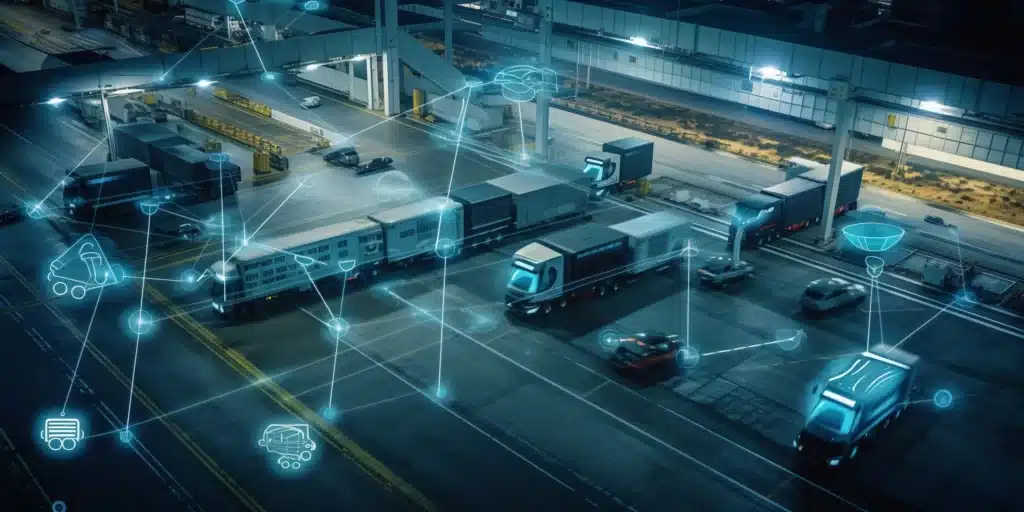
Role of the Devices in Collecting and Transmitting Data
Here’s how IoT-based devices help collect and transmit data:
- These IoT-based devices are typically equipped with sensors and communication modules.
- They continuously collect data from their environment, which could be vehicle-related information in the case of fleet tracking or environmental data in the case of sensors.
- Data is transmitted to centralized or cloud-based systems using wireless technologies like cellular networks, Wi-Fi, or dedicated IoT protocols like MQTT or CoAP.
- Once in the centralized system, the data can be processed, stored, and analyzed using software applications and algorithms.
- This data is then made accessible to end-users, such as fleet managers or industrial operators, through user-friendly interfaces, dashboards, and mobile apps.
- The insights derived from this data can be used to make data-driven decisions, optimize operations, reduce costs, enhance safety, and improve overall efficiency.
Role of IoT in Enhancing Fleet Management
Here’s how IoT helps enhance fleet management.
Real-Time Data
IoT-based telematics systems provide real-time data on vehicle location, driver behavior, and other critical parameters. This real-time data enables fleet managers to make informed decisions promptly, such as rerouting vehicles to avoid traffic or addressing driver safety issues.
Data Analytics
Telematics systems collect a vast amount of data, which can be analyzed to identify trends, patterns, and areas for improvement. Fleet managers can use this data to optimize routes, reduce fuel consumption, and enhance driver safety.
Predictive Maintenance
Telematics devices monitor vehicle diagnostics and can predict when maintenance is needed. This proactive approach reduces vehicle downtime and maintenance costs.
Cost Savings
By optimizing routes, reducing fuel consumption, and improving driver behavior, IoT-based telematics can lead to significant cost savings for fleet operations.
IoT-based telematics in fleet management involves the use of connected devices like GPS trackers and sensors to collect and transmit data, which is then processed and analyzed in real-time or later. This technology enhances traditional fleet management by providing real-time insights and analytics for better decision-making, cost savings, and overall operational efficiency.
Also, check out our article on top challenges of IoT in logistics and how to overcome them.
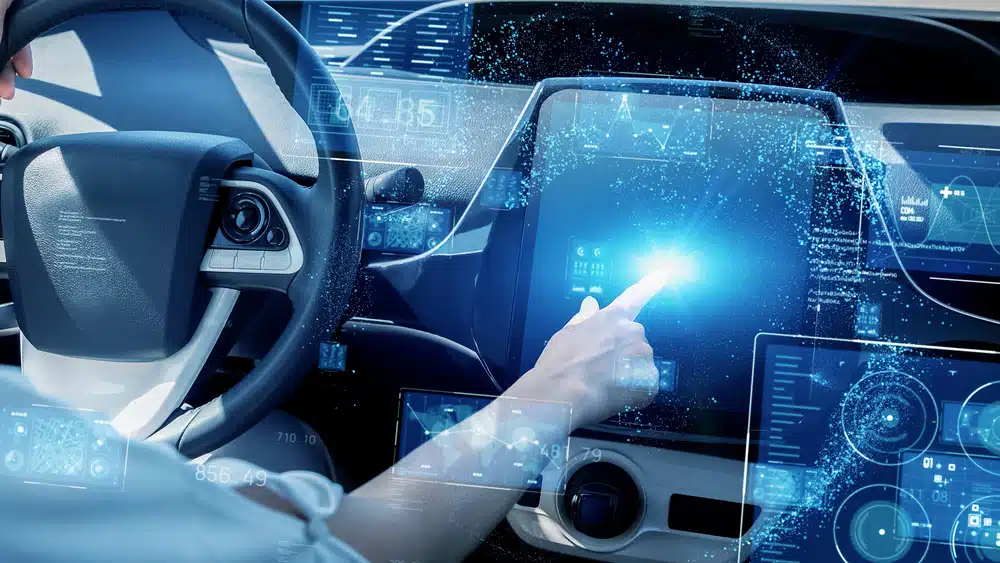
Benefits of Telematics IoT
IoT (Internet of Things) has revolutionized the telematics and vehicle tracking industry by providing real-time monitoring capabilities, enabling better route planning and optimization, improving fuel and maintenance management, and enhancing safety protocols. Let's discuss each of these aspects in more detail:
Real-Time Monitoring for Route Planning and Optimization
IoT-enabled telematics systems allow businesses to track their vehicles and assets in real time. GPS sensors, in-vehicle sensors, and communication devices provide up-to-the-minute data on vehicle location, speed, and even environmental conditions. This real-time data is invaluable for route planning and optimization:
Optimized Routes
By continuously monitoring vehicle locations and traffic conditions, businesses can make real-time adjustments to routes. This minimizes travel time, reduces fuel consumption, and enhances on-time deliveries.
Reduced Idle Time
Real-time monitoring helps identify instances of excessive idling, which can be minimized to save fuel and reduce carbon emissions.
Customer Satisfaction
Accurate arrival time predictions, made possible by IoT data, improve customer satisfaction by reducing wait times and ensuring deliveries arrive on schedule.
Fuel and Maintenance Management
IoT can significantly impact fuel consumption and maintenance needs through continuous monitoring and data analysis:
Fuel Consumption Monitoring
IoT sensors can track fuel consumption in real time. This data helps in identifying fuel-wasting practices such as excessive speeding or idling, leading to reduced operational costs.
Predictive Maintenance
IoT devices collect data on vehicle health, including engine performance, tire pressure, and other critical parameters. This data can be analyzed to predict when maintenance is needed. This proactive approach reduces downtime, lowers maintenance costs, and prolongs the lifespan of vehicles.
Parts Inventory Management
IoT systems can also help manage spare parts and inventory efficiently by predicting when specific parts are likely to fail or require replacement.
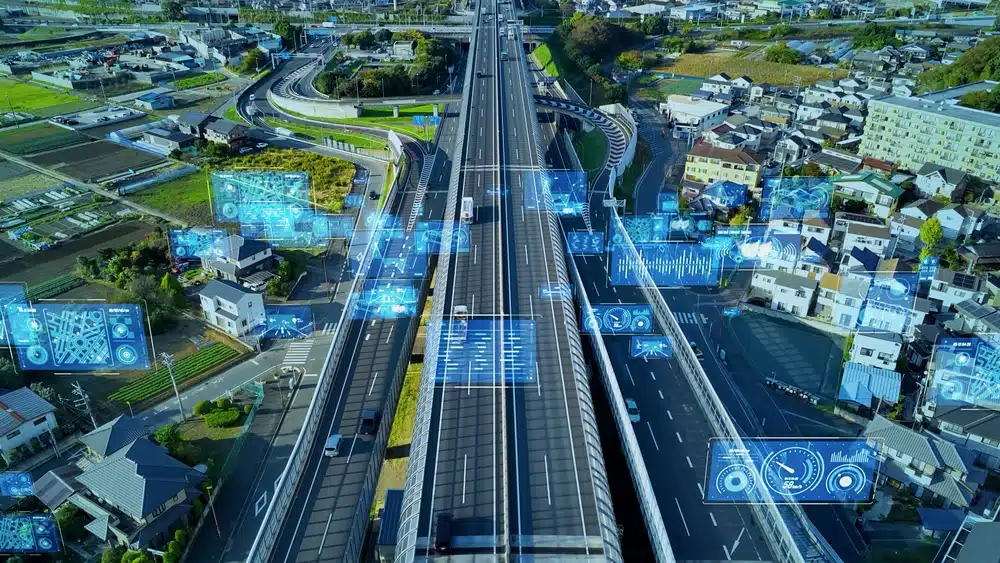
Safety Enhancements
IoT-powered telematics systems can greatly enhance safety protocols and reduce accidents by monitoring driver behavior:
Driver Behavior Monitoring
IoT devices can track factors like speed, acceleration, and braking patterns. This data allows companies to identify and address risky driving behaviors, thus improving overall safety.
Real-time Alerts
In-vehicle sensors and IoT connectivity can provide real-time alerts to drivers and fleet managers about unsafe actions, such as sudden braking or sharp turns, reducing the likelihood of accidents.
Driver Training
Using IoT data, companies can provide targeted training to drivers who exhibit unsafe behaviors, further improving safety on the road.
Insurance Benefits
Some insurance companies offer discounts to fleets that use IoT-based telematics systems for monitoring driver behavior, as safer driving practices result in fewer accidents and lower insurance premiums.
Use Cases of IoT-based Telematics in Fleet Management
IoT-based telematics technology has revolutionized fleet management by providing real-time data and insights that enable companies to optimize their operations, enhance efficiency, and improve safety. Here are some of the key use cases of IoT-based telematics in fleet management:
Fleet Predictive Maintenance
IoT sensors can monitor the health of vehicles in real time by tracking parameters like engine performance, tire pressure, and brake wear. Fleet managers can use this data to schedule maintenance before issues become critical, reducing downtime and avoiding costly breakdowns.
Asset and Cargo Management
IoT devices and sensors can track the location and condition of assets and cargo in transit. This ensures that goods are secure, and any anomalies or theft can be detected immediately. It also helps in improving supply chain visibility.
Fuel Management
Telematics systems can monitor fuel consumption, driver behavior, and vehicle idling. This data can be used to optimize routes, reduce fuel waste, and identify drivers who may need additional training in fuel-efficient driving.
Route Planning and Optimization
IoT-based telematics allows for real-time tracking of vehicles, traffic conditions, and weather. Fleet managers can use this information to plan and optimize routes, reduce travel time, and enhance customer service by providing accurate delivery ETAs.
Driver Safety
Telematics systems can monitor driver behavior and provide feedback to drivers in real time. They can track speeding, harsh braking, sharp turns, and other unsafe behaviors. This information can be used to implement driver training programs and reduce the risk of accidents.
Compliance and Regulatory Reporting
Telematics data can be used to ensure compliance with industry regulations and government mandates. This includes recording driving hours for drivers and maintaining accurate records for inspections.
Environmental Impact Reduction
Telematics can help companies reduce their carbon footprint by optimizing routes and reducing unnecessary fuel consumption. This is not only cost-effective but also environmentally responsible.
Customer Service and Communication
Real-time data from telematics systems allows for better customer communication. Companies can provide customers with accurate arrival times, update them on delays, and enhance overall service quality.
Theft Recovery and Security
Telematics can help track stolen vehicles and provide valuable information to law enforcement to facilitate vehicle recovery.
Productivity Improvement
Telematics can provide insights into driver productivity, helping companies identify areas for improvement and optimize their workforce.
Remote Diagnostics
Telematics systems can detect vehicle faults and transmit diagnostic information to mechanics or fleet managers, allowing for remote troubleshooting and reduced downtime.
Here you can read more about IoT-based GPS tracking software.

Implementing IoT-based Telematics in Fleet Management
Implementing IoT-based telematics in fleet management can significantly enhance the efficiency, safety, and cost-effectiveness of your operations. Here are the steps and considerations for successful implementation, along with a discussion on challenges and how to overcome them:
Steps for Implementing IoT-Based Telematics in Fleet Management
- Define Objectives and Requirements:
- Clearly outline your goals, such as improving fuel efficiency, driver safety, or route optimization.
- Identify specific requirements, like the number of vehicles to be equipped and the type of data to collect.
- Select Suitable Hardware:
- Choose the right IoT devices, such as GPS trackers, OBD-II dongles, and sensors.
- Ensure compatibility with your vehicles and consider scalability.
- Choose Connectivity Options:
- Decide on the connectivity options, like cellular, satellite, or low-power wide-area networks (LPWAN), based on your geographic coverage and data needs.
- Data Collection and Transmission:
- Install the hardware in vehicles and configure them to collect relevant data.
- Ensure real-time or periodic data transmission to a central server or cloud platform.
- Cloud Platform and Data Analysis:
- Select a cloud-based telematics platform for data storage and analysis.
- Utilize data analytics to gain insights into vehicle performance, driver behavior, and maintenance needs.
- Integration with Fleet Management Software:
- Integrate telematics data with your existing fleet management software.
- Enable features like real-time tracking, route planning, and reporting.
- Driver Training and Feedback:
- Train drivers on using the telematics system and provide feedback on their performance.
- Encourage them to use the data to improve their driving habits.
- Data Security and Privacy:
- Implement robust security measures to protect data from unauthorized access.
- Ensure compliance with data privacy regulations, such as GDPR or HIPAA.
- Maintenance and Support:
- Regularly maintain and update the IoT devices to ensure data accuracy.
- Provide technical support for drivers and fleet managers.
Challenges and How to Overcome Them
- Initial Investment: The cost of implementing telematics can be significant. To overcome this, assess the potential return on investment (ROI) and consider leasing or financing options.
- Data Overload: Telematics can generate vast amounts of data. To manage this, focus on collecting only essential data and use advanced analytics to extract meaningful insights.
- Resistance from Drivers: Drivers may be resistant to telematics, fearing constant monitoring. Overcome this by explaining the benefits, ensuring privacy, and involving them in the process.
- Data Security: To address data security concerns, implement encryption, access controls, and regular security audits.
- Technical Challenges: Technical issues may arise, such as device malfunctions or network outages. Establish a support system to address these promptly.
- Regulatory Compliance: Stay updated on relevant regulations and ensure your system complies with data protection laws.
- Scalability: As your fleet grows, your system needs to scale accordingly. Choose a solution that can easily accommodate additional vehicles and data.
- Change Management: Managing the organizational and cultural changes that come with telematics adoption is critical. Communicate the benefits and provide training and support.
- Integration Complexity: Integrating telematics with existing fleet management software can be challenging. Work closely with software providers or consider a comprehensive solution.
Case Studies
Here are a few case studies of organizations that have successfully implemented IoT-based telematics in their fleet management and the benefits they've realized:
- UPS (United Parcel Service):
- Implementation: UPS, a global package delivery and supply chain management company, has been a pioneer in utilizing IoT-based telematics for its fleet. They deployed telematics devices on their vehicles, which transmit data on vehicle location, speed, fuel consumption, and driver behavior to a central system.
- Benefits: UPS has reduced fuel consumption by optimizing routes, minimized vehicle downtime through predictive maintenance, improved driver safety, and enhanced customer service with accurate delivery estimates.
- Waste Management, Inc.:
- Implementation: Waste Management, a leading waste and environmental services company, integrated telematics into their fleet of garbage trucks. They used sensors and GPS tracking to monitor bin pickups, route efficiency, and vehicle maintenance needs.
- Benefits: The company reduced fuel costs and emissions by optimizing routes, minimized unscheduled vehicle maintenance, and enhanced customer service by providing real-time information on pickup schedules.
- Coca-Cola Enterprises:
- Implementation: Coca-Cola Enterprises adopted telematics to manage their delivery trucks. They installed GPS trackers and sensors to monitor vehicle locations, temperature inside refrigerated trucks, and driver behavior.
- Benefits: The company achieved significant fuel savings by optimizing routes and monitoring driver performance. They also ensured the quality of their products by maintaining the right temperature in delivery trucks.
- Walmart:
- Implementation: Walmart, the retail giant, utilizes telematics in its massive fleet of delivery trucks. They collect data on vehicle location, speed, engine diagnostics, and cargo temperature using IoT sensors.
- Benefits: Walmart improved supply chain efficiency by optimizing delivery routes and schedules, reduced fuel consumption and emissions, and ensured product quality by monitoring cargo conditions.

Future of IoT-based Telematics in Fleet Management
The future of IoT-based telematics in fleet management looks promising, with several emerging trends and developments shaping the industry. Telematics, the integration of telecommunications and informatics, plays a pivotal role in helping fleet managers optimize their operations, enhance safety, reduce costs, and improve overall efficiency. Here's a discussion on the emerging trends and future outlook of IoT in fleet management:
Enhanced Connectivity and 5G
As 5G networks become more widespread, fleet vehicles will have access to faster and more reliable connectivity. This will enable real-time data transfer and support applications that require high bandwidth, such as video streaming, remote diagnostics, and software updates. The low latency of 5G will also improve the responsiveness of IoT devices.
Advanced Data Analytics
The volume of data generated by IoT devices in fleet management is massive. Advanced data analytics, including machine learning and artificial intelligence, will play a crucial role in making sense of this data. Fleet managers can use predictive analytics to anticipate maintenance needs, optimize routes, and make more informed decisions.
Integration with Other Technologies
IoT-based telematics will increasingly integrate with other emerging technologies. For example, integrating IoT with autonomous vehicle technology can lead to self-monitoring and self-reporting vehicles. Blockchain may be used for secure data sharing and supply chain tracking, while augmented reality (AR) could assist drivers with navigation and maintenance tasks.
Electric and Autonomous Vehicles
As fleets transition to electric and autonomous vehicles, IoT telematics will be instrumental in monitoring and managing these vehicles. Data on battery health, charging status, and route optimization will be essential for electric vehicles, while autonomous vehicles will rely on IoT for real-time monitoring and remote control capabilities.
Enhanced Safety and Compliance
IoT-based telematics will continue to improve safety by monitoring driver behavior, providing real-time feedback, and ensuring compliance with regulations. Features like collision avoidance systems, drowsiness detection, and predictive maintenance will enhance safety standards.
Cybersecurity
With the increasing reliance on IoT devices and the potential for data breaches and vehicle hijacking, cybersecurity will be a critical focus in the telematics industry. Ensuring the security of data and devices will be paramount.
Global Expansion
IoT-based telematics will continue to expand globally. Companies with international fleets will benefit from standardized IoT solutions that work seamlessly across borders, aiding in global operations.
Conclusion
In conclusion, IoT-based telematics has revolutionized the landscape of fleet management in ways that were previously unimaginable. This transformative technology has provided fleet operators with a powerful set of tools to enhance operational efficiency, safety, and cost-effectiveness. By seamlessly connecting vehicles, drivers, and the central management system, IoT-based telematics has enabled real-time monitoring, data-driven decision-making, and improved communication.
One of the key advantages of IoT-based telematics is its ability to optimize vehicle performance and maintenance, reducing downtime and associated costs. It allows for the proactive identification of maintenance issues and helps extend the lifespan of fleet assets. Additionally, the ability to monitor driver behavior and performance has contributed to increased safety and compliance, reducing accidents and related expenses.
Furthermore, the data collected through IoT-based telematics offers valuable insights into route optimization, fuel efficiency, and overall resource allocation. This data-driven approach not only cuts operational costs but also reduces the environmental footprint, contributing to sustainability goals.
However, the adoption of IoT-based telematics also comes with its own set of challenges, including data security and privacy concerns, the initial cost of implementation, and the need for comprehensive staff training. To fully realize the benefits of this technology, fleet operators must address these challenges and continuously adapt to evolving best practices.
you may also want to read

Leveraging Local LLMs and Secure Environments to Protect Sensitive Information
In the rapidly evolving digital landscape, businesses are increasingly adopting Generative AI (GenAI) technologies to stay competitive and innovate. Large...

Boost Efficiency Today: Easy AI Integration for Immediate Results
In the past, the idea of integrating artificial intelligence into your business might have felt like venturing into uncharted territory—complex,...

A Roadmap to Gen AI Adoption for Small and Medium Businesses
Unlock new opportunities by integrating Generative AI into your business operations. In today’s fast-paced digital landscape, small and medium businesses...
